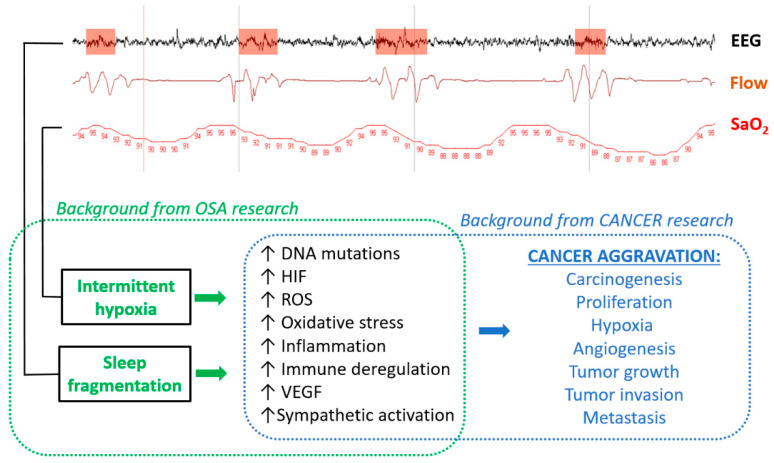Figure 1.
Diagram illustrating the biological plausibility of cancer aggravation by obstructive sleep apnoea (OSA). (Top) Example of the signals extracted from a routine polysomnographic study in a patient with OSA: an electroencephalography channel (EEG) showing arousals (orange); breathing flow assessed by nasal prongs (Flow), showing cyclic apnoeas and ventilation; and arterial oxygen saturation (SaO2), indicating intermittent hypoxemia (figures are SaO2 in %). A background of OSA research indicates that intermittent hypoxia and sleep fragmentation induce biological alterations, which, according to the background of cancer research, are modulators of cancer aggravation.

